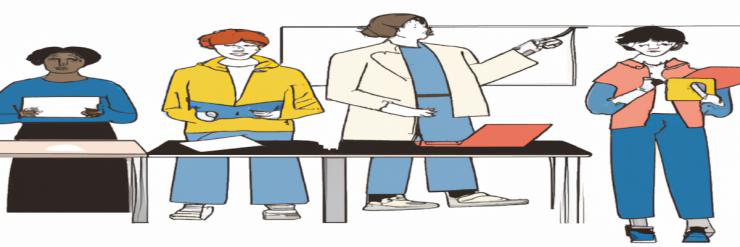Learning Process

Understanding The Elements and Real-Life Examples
The learning process is a fundamental aspect of human development that allows us to acquire new knowledge, skills, and behaviors. Whether it is learning a new language, mastering a musical instrument, or developing a new skill, the learning process is essential for growth and progress. However, the process of learning can be complex and multifaceted, and it can take place in a variety of different settings and contexts. In this article, we will explore the various elements of the learning process, including the different types of learning, the importance of active participation, and the role of feedback and reflection. We will also provide real-life examples of the learning process in action, highlighting how individuals and organizations can optimize their learning experiences for maximum results.
First and foremost, it is important to understand that there are different types of learning, each of which requires a unique approach and set of strategies. Some of the most common types of learning include cognitive learning, which focuses on the acquisition of knowledge and the development of mental skills, and motor learning, which involves the development of physical skills and coordination. Additionally, there is affective learning, which is related to the development of emotions and attitudes, and social learning, which pertains to learning through observation and interaction with others.
One of the key elements of the learning process is active participation. This means that in order to learn effectively, individuals must actively engage with the material and take an active role in the learning process. For example, a student who passively listens to a lecture is unlikely to retain as much information as a student who actively takes notes and participates in class discussions. Similarly, a musician who simply listens to recordings of a piece of music is unlikely to master the piece as quickly as one who actively practices and performs it.
Another important aspect of the learning process is the role of feedback and reflection. Feedback is essential for helping individuals understand how well they are performing and where they need to improve. For example, a student who receives feedback on a test is able to see where they made mistakes and can learn from them. Similarly, an athlete who receives feedback on their technique is able to make adjustments and improve their performance. Reflection, on the other hand, is the process of thinking about one's own learning and understanding how it can be applied to other situations.
Real-life examples of the learning process can be found in a variety of settings and contexts. For example, a young child learning to walk is a prime example of motor learning. The child must actively practice and engage with the task, and receive feedback through their parent's reaction and encouragement. Another example can be found in the workplace, where employees are constantly learning new skills and knowledge in order to advance in their careers. In this context, the learning process may involve formal training, on-the-job experience, and mentorship from more experienced colleagues.
The learning process is a complex and multifaceted phenomenon that plays a crucial role in human development. By understanding the different types of learning, the importance of active participation, and the role of feedback and reflection, individuals and organizations can optimize their learning experiences for maximum results. Whether it is a child taking their first steps or an employee working to advance their career, the learning process is essential for growth and progress.
Another key aspect of the learning process is the importance of setting goals. By setting specific, measurable, achievable, relevant, and time-bound (SMART) goals, individuals can stay focused and motivated throughout the learning process. For example, a student who sets a goal to achieve a certain grade in a class is more likely to stay on task and put in the necessary effort to achieve that goal. Similarly, an athlete who sets a goal to break a personal record is more likely to engage in regular training and practice.
Additionally, the learning process is often enhanced through the use of different teaching strategies and techniques. For example, the use of visual aids, such as diagrams and videos, can help students better understand complex concepts. Similarly, the use of hands-on activities and simulations can help students better retain information and apply it to real-world situations. Furthermore, the use of technology, such as online resources, can also provide new opportunities for learning and engagement.
Real-life examples of the use of technology in the learning process can be seen in the rise of online education and e-learning platforms. With the advent of the internet and digital technologies, it is now possible for students to take classes and earn degrees online, opening up new opportunities for learning and professional development. Furthermore, with the advent of virtual and augmented reality technologies, it is also possible for students to experience simulations and simulations of real-world situations in order to better understand and retain information.
Another real-life example of the learning process can be found in the field of professional development and continuing education. As technology and industries are rapidly changing, it is becoming increasingly important for professionals to stay up-to-date with new skills, knowledge, and best practices in order to remain competitive in their field. This can involve attending conferences, workshops, and seminars, or participating in online learning and certification programs.
In conclusion, the learning process is a complex and multifaceted phenomenon that plays a crucial role in human development. By understanding the different types of learning, the importance of active participation, the role of feedback and reflection, goal setting and the use of different teaching strategies and technologies. Individuals and organizations can optimize their learning experiences for maximum results. Whether it is a child taking their first steps or an employee working to advance their career, the learning process is essential for growth and progress.
